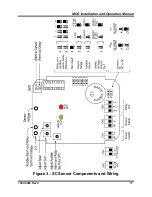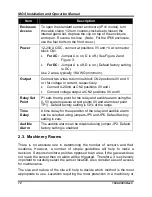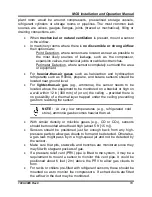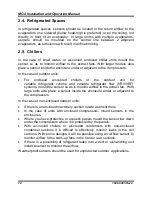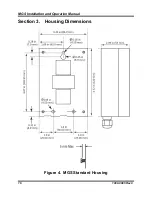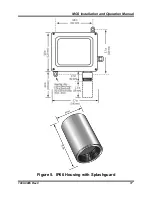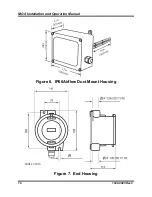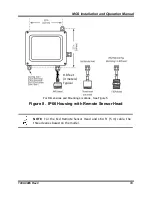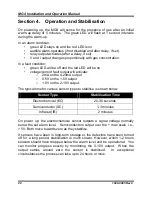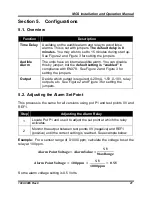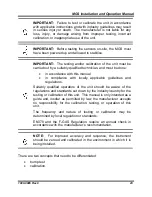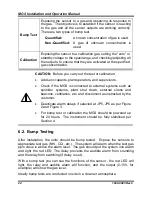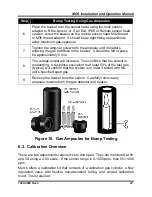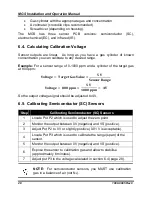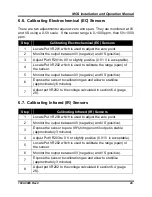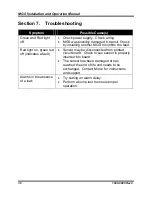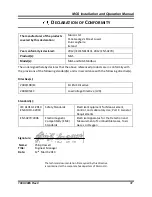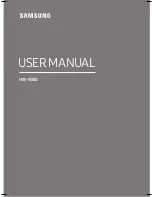
MGS Installation and Operation Manual
1000-0085 Rev 0
25
NOTE:
Prior to carrying out a bump test, check and adjust the
zero setting as described in the Calibration section.
NOTE:
Procedures for bump test and calibration vary depending
on the sensor technology used and the gas in question. The MGS
is available in three sensor versions: Semiconductor (SC),
Electrochemical (EC) and Infrared (IR).
NOTE:
Do not pressurize the sensor.
NOTE:
For semiconductor sensors, you MUST use calibration
gas in a balance of air (
not
N
2
).
IMPORTANT:
After a semiconductor or electrochemical sensor is
exposed to a substantial gas leak, the sensor should be checked
and replaced if necessary.
NOTE:
To test the audible alarm and/or relay function, check the
delay is set at zero and expose to gas. You can mute the audible
alarm by removing jumper 3.
Step
Bump Testing Using Calibration Gas Cylinders
1
Remove the enclosure lid of the
gas detector (not in an exhaust
area).
2
Connect a voltmeter to monitor
sensor response (in Volts DC).
Monitor the response between
pins 0V and VS.
3
Expose the sensor to gas from the cylinder. You can place the
entire MGS into a plastic bag or use a plastic hose/hood to direct
gas to the sensor head. A response of above 80% is acceptable.

